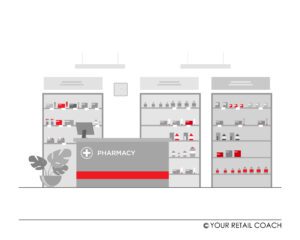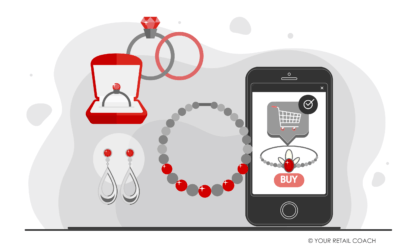Retail Pharmacy Consulting
Retail pharmacies have been quite late in upgrading their retail game. These enterprises have remained long stuck with the brick and mortar format and other traditional ways of doing business. For long, their markets have remained confined to the local limits. Many have continued to taste success riding on a strong local reputation. But the danger of stagnancy was apparent along with a huge void of marketing efforts.
But in recent years, it has been observed that more retail pharmacies are becoming a part of the retail revolution. This has mainly happened with the adoption of the eCommerce route. Other contributing factors are the emergence of competitive business models and efficient channels, modernization of the physical stores, and digitization of business processes.
Why traditional retail pharmacies are falling behind
Lack of physical modernization
Retail channel strategy in one industry is capable of influencing customers’ expectations in other industries. When customers visit a super mall or a supermarket, the experience delivered to them is of a far superior level than the ones they get when they visit any traditional retail store. This difference is strong enough to build a perceptual void in the minds of customers to seek modernization where they do not get it. Retail pharmacies and clinics need to realize this. They may have a solid client base and generating healthy revenues for now. But sooner or later, competitors or new players will expose their vulnerabilities arising from not choosing to modernize.
Lack of marketing on the digital front

Many pharmacies do not seem to be making any significant effort to promote their brand on digital platforms. Being content with today’s success is one thing and not keeping up with the trends of the industry is another. This is a potential threat because businesses that deny evolving also deny themselves a future. It is important that traditional retail pharmacies keep up with the digital trends taking place in the industry. Uber can happen to any business.
By not having a strong digital presence, retailers are missing out on opportunities to attract clients on digital platforms like social media and search engines. They need not necessarily sell products online.
Digital presence and popularity cannot be achieved overnight. So, the right time for them to start with digital marketing is now.
Lack of growth and expansion
Growth and expansion are rare to see among retail pharmacies. Although this is changing, many traditional pharmacies that are successful and are capable of capturing bigger pies of the market are not moving forward in the direction of seeking to transform the business into a bigger brand. When a business does not seek growth and expansion, it puts itself at the risk of being overtaken by competitive forces. Whether a business reckons it or not, if the market it is serving has further potential, new players will enter and try to not only make their place in it but also try to eat away the market share of its competitors.
Not embracing eCommerce
Ecommerce has been the most potent disruptive force in the retail industry. The retail pharmacy business has also been affected by it. This was eminent in the protests that took place in many parts of the world against letting the eCommerce channel serve the retail pharma sector. But instead of complaining, a far better approach is embracing eCommerce in ways that are relevant to a business. It is an opportunity for traditional retail pharmacies to expand their business to new markets in new regions. They can still retain their local customer base with innovative changes in their business models and marketing strategies. In fact, by going online they can compete more effectively with eCommerce players and also capitalize on their brick and mortar experience by expanding in numbers.
Lack of automation and digitization
To compete with modern retail and eCommerce enterprises, traditional pharmacies need to adopt solutions for automation and digitization of business processes and operations. But in contrast, many retailers are still operating their business with systems that are highly dependent on human efforts and intervention. Bringing progressive changes in the operational systems can be cumbersome in the short run but in the long innings, it enhances the operational efficiency of businesses, makes their business scalable and keeps further avenues for modernization and upgradation at an approachable effort. Automation and digitization are not expected to be achieved overnight. It takes time in defining the business IT strategy, assessing and defining the existing business processes and operations, mapping the inter-functional dependencies, identifying software and other technological solutions to be used, financial planning and budgeting, testing and launch activities, staff training, control measures, etc.
Lack of training
Employees play a big role in the success and failure of a business. Customers would not mind shifting to another retail store whose staff are technically sound, behaviourally approachable, and emotionally cognizant of buyer and consumer behaviour. That was about the front line staff. For the back end operations, businesses need employees who understand their duties and responsibilities and possess the requisite skills and abilities to carry out their tasks. But employees do not always come job-ready. Every business has its unique requirements. Business processes and operations also vary. Even within a state or a city, consumer expectations and priorities can be different. Whether it is a small retail pharmacy or a branded store chain, training and development activities are critical for smooth counter activities and backend operations.
Manual management of stock and records

Of course, human intervention cannot be completely ruled out in the execution of many critical business processes and operations. But technologies are available that eases or reduces human effort or intervention. And one such area where technology has proven to be blissful for all businesses is inventory management. Traditionally, many manual systems have worked well and continue to do so. It is still common to see pharmacists keeping medicines in boxes and shelves in an alphabetical manner. That is a smart approach. But after some time, products begin to get mixed up. There are more medicines to fit into the 26-alphabet inventory system. Pharmacists also carry a notebook where they register that a certain product is out of stock and has to be reordered. If that notebook is lost or spoiled, days or weeks of work would go in vain. There will be no other way to check what products have to be ordered again. All these could be avoided with the help of software and hardware technologies. Suppliers could be automatically informed for a reorder with the provision of prior confirmation when the units of a product available in the store hit the reorder level. The use of a scanner could show on a digital screen which shelf a product belongs to.
How YRC can help: a glimpse
We are a boutique retail and eCommerce consulting firm with eight-plus years of experience. We offer a comprehensive range of services to retail and eCommerce clients in over 20 twenty verticals. Our team of consultants come from diversified academic and project exposure. Here’s a glimpse of our services to retail and eCommerce businesses to help them establish a robust enterprise with meticulous planning and immaculate strategies.
Market Research
In market research, we carry out an objective, detailed, and comprehensive assessment of the target market. Our goal in retail market research or eCommerce market research is not only to present a blend of statistics and the market realities with facts and figures but also to help clients in informed decision-making and more effective strategy formulation. In retail pharmacy consulting services, we follow a multifaceted approach for segmenting the target market on the grounds of distribution channels, product lines, product categories, end-users, product features, etc. A detailed segmentation helps in defining the target segments with higher precision and formulating better strategies for brand positioning.
Business Model Development
A high-value and competitive offering is critical in retail to rise above the ordinary. Conceptualizing innovation in business modelling has become an intriguing task in retail. Our retail pharmacy business consulting experts put to test every assumption made so far about the success of a business idea. After deliberating on every critical aspect and getting convincing answers, we move on to crafting business models. The entire exercise is carried out following systematic and proven processes.
In retail pharmacy consulting services, we seek to bring out the best UVP for our clients and define the strategic framework of the value chain and internal capabilities required to deliver the intended value. We help in formulating omnichannel strategies, identifying the business IT requirements, and mapping the operational aspects.
ECommerce Consulting

In eCommerce and retail pharmacy business consulting, we help retail clients formulate their business strategy to go online. We assess the unique business requirements and identify the areas where eCommerce could be applied. Some clients prefer only to take up digital marketing for their business. Some want to go omnichannel or multichannel. We offer our services as per the unique demands of each client. Our consulting services encompass business idea validation, IT and automation solutions planning, team management, digital marketing, digital analytics, CX consulting, eCommerce business model, eCommerce business plan, and more.
SOP Development
As a retail and eCommerce consulting enterprise with expertise in SOPs and business process management, we offer SOP consulting services for retail pharmacy businesses of all sizes. We also cater to family and franchise businesses. Our SOP development services are aimed at establishing operational routines, developing growth-oriented business systems, and achieving process orientation. Before we start working on SOP manuals, our team of retail pharmacy business consultants carries out an extensive analysis of the existing business processes and operations and maps the new requirements.
Layout Planning
In layout planning, YRC provides expert assistance to retail clients in the layout design of their stores, warehouses, and fulfilment centres. This is done considering the constraints and requirements of each client. The objective is to help businesses utilize their space with optimization aligned with the marketing objectives and business operations. Our retail pharmacy business consultants take into consideration customer experience, zone classification, ease of movement of goods and people, visual appeal, logistical aspects, safety and security concerns, and more.
SOP-IT Integration
Defining and mapping the business processes and operations across the enterprise is only half the task done. The other half is the integration of the SOPs with the business IT software platform. Without the integration of the software and SOPs, it is impossible for a business and its employees to follow the SOPs using the business IT systems. In retail pharmacy business consulting, YRC’s role is to help clients identify and define the specifications of the required business IT systems. This is followed by mapping the blueprint for SOP-IT integration. Our team of retail pharmacy business consultants may suggest customizations in the software functionalities to suit business requirements and SOP integration purposes.
Business Plan Development
Once a business idea is close to its execution plan, the entire project has to be scrutinized from a financial perspective. What is sought to be answered in a business plan is whether and how the business idea is commercially feasible. This entails a financial assessment of the implementation plan. We follow a planned, systematic, and comprehensive set of SOPs in making these financial projections and assessments. If the financial indicators are not promising, we ask clients to reconsider their ideas and models. In retail pharmacy consulting services, our objective is to provide clients with a clear financial vision and roadmap of their proposed business projects.
Organization Design and Talent Management
Whether it is a single-store pharmacy or a chain of stores comprising hundreds of employees, organization design and structure are essential for every business enterprise. In organization design and structure, an enterprise is represented in terms of functions and departments, roles and positions, authority-responsibility, accountability and reporting, formal routes of communication, the flow of work, etc. As part of our retail pharmacy consulting services, our offerings include planning and implementation support in organogram design, staff analysis, succession planning, HR policies and SOPs, recruitment and training, change management, and more.
We are a boutique retail and eCommerce consulting enterprise. To know more about our retail pharmacy business consulting services or if you have any queries for our retail pharmacy business consultants, drop us a message and we will get back to you.
Let’s Talk!
Related Blogs
Challenges for Luxury Retail Brands and Stores
The term ‘luxury’ could have different connotations from different perspectives. For some people, it is optional and they may not strongly feel the need to indulge. For some others, it could be a representation of status symbol, personal identity, and...
Starting an Online Luxury Retail Business: An Organized Approach by YRC
Luxury retail is an exclusive vertical. Premium customer support, impeccable product quality, robust distribution and delivery, and an irrefutable brand positioning leave no room for ordinary ways of doing business in luxury retail. From planning to operations,...
How to start an Online Jewellery Business?
Online Niches, Stats, & Steps every entrepreneur must know !!! Wearing jewellery is no longer restricted to women alone, times have changed and there is increasing demand amongst men to buy jewellery both online and offline. Currently, jewellery and accessories...





We work only for Visionaries.